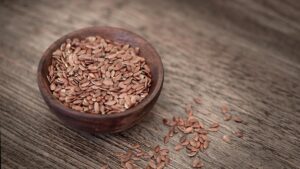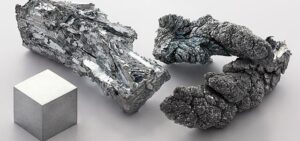
In Ukraine, oil flax remains a niche crop, but its gross harvest in the 2025-2026 marketing year (MY) will amount to 66 thousand tons, which is the highest result since the 2017/18 MY, according to the information and analytical publication UkrAgroConsult.
“Production is subject to fluctuations influenced by market factors and weather conditions. Since 2020, there has been a steady expansion of acreage. Growth is driven by demand from the EU, the main importer of flax. (…) The combination of expanded acreage and improved yields has been decisive. In the 2024/25 MY, there has been a partial recovery in yields, which are still below the crop’s potential,” analysts explained.
Experts noted that exports remain a key driver of the market — more than 80% of the Ukrainian flax harvest in 2024/25 MY is sent abroad. During the years of war, this share has more than doubled.
The main destination for flax sales is the EU (Italy, Poland, and Belgium are the top importers). After the start of the full-scale war, EU countries significantly reduced their purchases of Russian flax, reorienting themselves to alternative suppliers from Ukraine, Kazakhstan, and Canada.
At the same time, after peaking in 2023/24 MY (over 70 thousand tons), shipments from Ukraine decreased by approximately 24% in 2024/25 MY.
“The Ukrainian oil flax market is entering a phase of stable recovery. The crop is gradually regaining its position in the crop structure, forming a new niche for small and medium-sized agricultural producers. With support for exports and the development of processing, flax has the potential to establish itself as a promising alternative crop for the northern regions of the country, which are increasingly facing weather risks,” UkrAgroConsult concluded.

Imports of zinc and zinc products to Ukraine in January-October 2025 decreased by 8% to $45.52 million, while exports tripled to $1.14 million.
In October, imports amounted to $4.3 million, exports — $0.19 million.
In 2024, zinc imports increased by 27.5% to $58.61 million, and exports increased 3.4 times to $0.56 million.
Pure metallic zinc is used to recover precious metals, protect steel from corrosion, and for other purposes.

Ukraine sharply increased imports of lead and lead products—by 8.9 times, to $6.89 million in the first ten months of 2025.
At the same time, exports fell by 16.4% to $8.17 million.
For comparison, in 2024, lead imports increased 2.4 times to $2.39 million, while exports fell by almost a quarter to $11.4 million.
Lead is currently mainly used in the production of lead-acid batteries for the automotive industry. In addition, lead is used in the manufacture of bullets and certain alloys.

In January-October of this year, Ukraine reduced exports of carbon steel semi-finished products in physical terms by 35.5% compared to the same period last year, to 1 million 79,360 thousand tons.
According to statistics released by the State Customs Service (SCS) on Wednesday, in monetary terms, exports of carbon steel semi-finished products fell by 38% to $512.964 million.
The main exports were mainly to Bulgaria (35.78% of supplies in monetary terms), Poland (17.72%), and Turkey (16.54%).
During the period in question, Ukraine imported 83,788 thousand tons of semi-finished products worth $62.282 million, mainly from Oman (35.57%), Germany (23.53%), and the Czech Republic (15.84%), while in the first 10 months of 2024, it imported 15 tons of semi-finished products worth $33 thousand.
As reported, in 2024, Ukraine increased its exports of semi-finished carbon steel products in physical terms by 56.7% compared to 2023, to 1 million 886,090 tons, while revenue in monetary terms increased by 52.4% to $927.554 million. The main exports were to Bulgaria (32.06% of supplies in monetary terms), Egypt (18.50%), and Turkey (11.14%).
In 2024, Ukraine imported 306 tons of semi-finished products worth $278 thousand from the Czech Republic (88.13%), Romania (7.19%), and Poland (2.88%), while in 2023, it imported 96 tons worth $172 thousand.

In January–October this year, Ukraine reduced manganese ore exports by 30.8% compared to the same period last year, to 13,732 thousand tons, but in August–October, it stepped up deliveries.
According to statistics released by the State Customs Service (SCS), while deliveries in the first seven months of 2025 amounted to 2,977 thousand tons, exports more than doubled in August, when 5,037 thousand tons were exported, 1,725 thousand tons in September, and 3,993 thousand tons in October.
In monetary terms, exports for the ten months of 2025 fell by 17.4% compared to the same period in 2024, to $2.214 million. At the same time, the main exports were to Slovakia (98.74% of shipments in monetary terms) and Poland (1.26%).
There were no imports of manganese ore during this period.
As reported, in January 2024, Ukraine exported 44,903 thousand tons of manganese ore worth $6.563 million to the US, ending a two-year hiatus in exports to foreign markets. In February-December 2024, there were no exports of manganese ore.
At the same time, for the whole of 2024, the country imported 84,293 thousand tons worth $18.302 million from Ghana (98.85%), Brazil (0.99%), and Belgium (0.11%). There were no imports in October-November.
Ukraine did not export manganese ore in 2022 and 2023, and in 2021, it exported 770 tons worth $89 thousand.
In addition, it was reported that the Pokrovsky Mining and Processing Plant (PGZK, formerly Ordzhonikidze Mining and Processing Plant) and the Marganetsky Mining and Processing Plant (MGZK, both in Dnipropetrovsk region), which are part of the Privat Group, stopped mining and processing raw manganese ore in late October-early November 2023, while NZF and ZZF stopped smelting ferroalloys. In the summer of 2024, ferroalloy plants resumed production at a minimum level.
PGZK and MGZK did not produce any products in 2024, while in 2023, PGZK produced 160.31 thousand tons of manganese concentrate, and MGZK was idle.
In Ukraine, manganese ore is mined and enriched by the Pokrovsky and Marganetsky mining and enrichment plants.
The consumers of manganese ore are ferroalloy enterprises.

In January-October of this year, Ukraine reduced exports of titanium-containing ores and concentrates in physical terms by 95.2% compared to the same period last year, to 277 tons.
According to statistics released by the State Customs Service (SCS) on Wednesday, exports of titanium-containing ores and concentrates fell by 94.7% in monetary terms, to $496,000. The main exports were to Uzbekistan (35.61% of shipments in monetary terms), Turkey (35.01%), and Egypt (29.38%).
In addition, Ukraine imported 78 tons of titanium-containing ore worth $117,000 from China (98.29%, deliveries took place in January) and Kazakhstan (1.71%, deliveries took place in May) in the first 10 months of 2025.
During this period, Ukraine exported 2,466 tons of niobium, tantalum, vanadium, and zirconium ores and concentrates worth $3.954 million to Spain (48.90%), Germany (24.53%), and Italy (17.19%). At the same time, the country imported 417 tons of such ores worth $1.068 million from Spain (72.38%), the Czech Republic (12.73%), and China (12.45%).
As reported, in 2024, Ukraine reduced its exports of titanium-containing ores in physical terms by 37.5% compared to the previous year, to 7,284 thousand tons. In monetary terms, exports of titanium-containing ores and concentrate decreased by 40% to $11.654 million. The main exports were to Turkey (62.82% of supplies in monetary terms), Egypt (7.38%), and Poland (6.93%).
Last year, Ukraine imported 314 tons of titanium-containing ore worth $492 thousand from China (87.78%), Vietnam (6.11%), and Senegal (also 6.11%).
At the same time, experts pointed out the inconsistency of statistics on exports of titanium-containing ores. However, in response to a request from Interfax-Ukraine, the State Customs Service (SFS) of Ukraine stated that complete data on the export of titanium raw materials is not provided due to restrictions on the volume of export and import operations with military and dual-use goods, which are reflected in aggregate form under “Other goods.” They explained that, in particular, deliveries of titanium-containing ores from companies differ from the SCS data.
“We would like to inform you that these deliveries are included in the statistical exports from Ukraine, but are not reflected in the foreign trade statistics published by the State Customs Service (…) under commodity item UKTZED 2614 ”Titanium ores and concentrates” in view of the following (…) In accordance with the provisions (…), when protecting data for confidentiality purposes, any information considered confidential is reported in full at the next, higher level of product data aggregation,” the State Customs Service explained in its response to the agency.
It was clarified that information on customs clearance and movement across the customs border of Ukraine of goods subject to export control is included in the list of information containing official information in the SSU, in accordance with the relevant order.
In Ukraine, titanium-containing ores are currently mined mainly by PJSC “United Mining and Chemical Company” (UMCC), which manages the Vilnohirsk Mining and Metallurgical Plant (VGMK, Dnipropetrovsk region) and the Irshansk Mining and Processing Plant (IGZK, Zhytomyr region), as well as LLC “Mezhirichensky GZK” and LLC “Valky-Ilmenite” (both LLCs are located in Irshansk, Zhytomyr region). In addition, the production and commercial firm Velta (Dnipro) built a mining and processing plant at the Birzulivskyi deposit with a capacity of 240,000 tons of ilmenite concentrate per year.